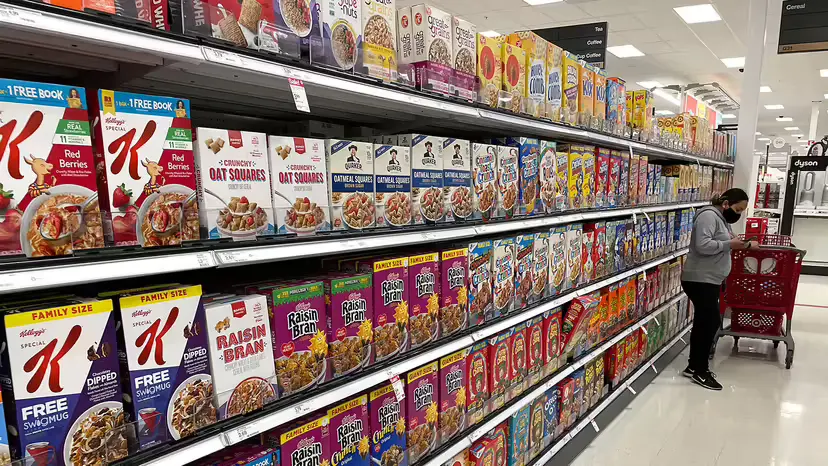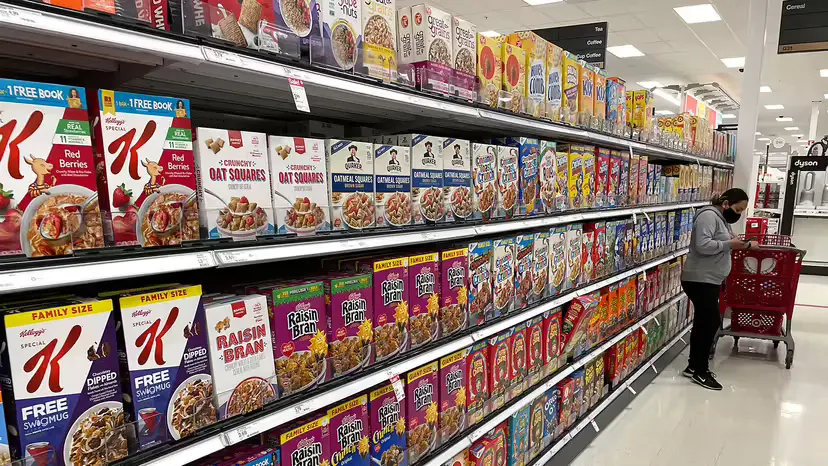
I hope you won't mind me asking such a sensitive question, but have you found that you go through rolls of toilet paper much more quickly than usual? There's a reasonable explanation for that, and it has to do with the fact that rolls of toilet paper are getting smaller.
Major companies such as Charmin, Angel Soft, and Kirkland Signature by Costco have, over the course of the past few years, all taken steps to reduce the number of individual sheets that come on each roll of toilet paper. Each individual roll is narrower, however the packages still contain the same total number of rolls as before.
- The size of the Charmin jumbo roll has been reduced by 7.5 percent, going from 264 sheets to 244 sheets.
- The size of Angel Soft's giant roll was cut in half, going from 425 to 320 sheets. This represents a loss of 25 percent. (The manufacturer stated that it simultaneously increased the thickness of the sheets by twenty percent.)
- The rolls produced by Kirkland Signature lost 45 sheets each, bringing their total count down from 425 to 380, which is a drop of 10.5%.
The most essential thing is that even though there are less sheets on each roll, the price remains the same for each roll. You have just entered the incredibly frustrating world of shrinkflation.
What exactly is "Shrinkflation"?
The term "shrinkflation" refers to a straightforward economic notion. Because inflation rates are high over the world at the moment, manufacturers are currently facing higher costs for a variety of inputs, including raw materials, ingredients, packaging, and transportation, among other things. Companies have two alternatives if they want to continue making a profit: either they can increase the price of their items or they can charge the same price for a smaller quantity of the product.
Consumers are price sensitive, which means that they are likely to notice when the price of a commonly purchased item, such as toilet paper, goes up. This is something that brands are aware of. However, what kind of insane consumer would notice if their giant rolls of toilet paper were merely 8 percent thinner, particularly if the packaging and branding were otherwise unchanged?
It wouldn't escape Edgar Dworsky's attention. Dworsky is a consumer lawyer and the mastermind behind the consumer advocacy websites Consumer World and Mouseprint.org. On these websites, he keeps a long list of products that have been the victims of shrinkflation. (From there, we gleaned the statistics that support the remarkable decrease in the size of rolls of toilet paper.)
Dworsky has been studying the phenomenon of shrinkflation for decades; nonetheless, he reports that in 2021 and 2022, there was "a rash of products" that shrunk as a result of manufacturers attempting to cope with record high inflation.
Recently, the chief executive officer of Kellogg asserted that his company decreases the price of a product whenever it shrinks the size of the product. However, according to Dworsky, who has found hundreds of examples of businesses, including Kellogg's Keebler line of cookies, charging the same or more for smaller products, this argument is "ludicrous."
According to Dworsky, "No company would go through the increased cost of retooling their manufacturing plant and redesigning the package if they just did an exact proportional drop in the number of ounces and the price," which translates to "No company would go through the increased cost of retooling their manufacturing plant and redesigning the package." "From a business perspective, it doesn't make any sense."
Extreme Cases of Price Deflators and Shrinkage
There are certain product categories that are significantly more prone to experience price deflation than others. These are the following:
- paper products such as toilet paper, paper towels, and tissues are examples of paper goods.
foods that are eaten as snacks, such as chips, crackers, and cookies
- cereals served for breakfast
- Products for the bathroom and kitchen that are liquid, such as dish soap, shampoo, and moisturiser
- A recent survey conducted by Gartner found that 62 percent of American consumers stated they might quit buying a brand that practised shrinkflation if they found out about it. If what you say is accurate, then the following brands have reason to be concerned (one again, all of these statistics are courtesy of Mouseprint.org):
- The volume of Arm & Hammer's laundry detergent has decreased from 75 ounces to 67.5 ounces, although the company continues to guarantee that it will clean "50 loads" of clothing.
- Quaker Instant Muesli has quietly lowered the number of muesli packets included in each box from 10 to 8, resulting in a 20 percent decrease in quantity while maintaining the same price.
- The volume of Folgers instant coffee was reduced from 51 ounces to 43.5 ounces, yet the company continues to claim that each container can hold "up to 400 cups" of coffee.
- Gatorade has long been sold in bottles with a capacity of 32 ounces, which is equivalent to one quart. Recently, however, the company introduced a new bottle with a tapered waistline that has a capacity of only 28 ounces.
- If you're starting to feel a headache coming on, you might want to take note that Aleve is now only selling 90 pills each bottle rather than 100.
- Breyers ice cream, much like many other brands of ice cream, has not offered a true half-gallon (64-ounce) container in years. However, Breyers is currently available in 48-ounce containers, which is just a quart and a half (25 percent less than the original).
- The entirety of General Mills' 'family size' morning cereal line has been reduced in size and repackaged in more space-efficient packaging.
"Frankly, I don't know how some of those cereal boxes on the store shelves can even stand up anymore," adds Dworsky. "There is hardly any trace of their presence."

Are You Able to Fight Inflation Stagnation?
Even Dworsky agrees that it takes a very particular type of consumer to identify shrinkflation, because manufacturers are not going to publicise the fact that their products are "Now Slightly Smaller!"
"The only way to know if your product has shrunk is to know the size of the products you buy regularly and to double-check when you go to the store," says Dworsky. "Knowing the size of the products you buy regularly is the only way to know if your product has shrunk."
Although it does happen on occasion, Dworsky or one of his ever-vigilant minions on Mouseprint.org strikes gold and discovers the freshly shrunken product on the shelf right next to the older version of the goods. However, this is an extremely uncommon occurrence.
Related link : Tartare, the smelly French glutton, devoured everything from puppies and rats to kittens and dead bodies.
If you truly want to avoid being a victim of shrinkflation, you should keep in mind that the boxes of "Family Size" Cinnamon Toast Crunch cereal typically weigh 19.3 ounces, and that the jugs of Gain laundry detergent contain 165 fluid ounces of liquid capacity each. That is not easy!
Because companies are doing everything in their power to distract customers' attention away from the true net weight or sheet count of a product, and because consumers are falling for it. Not only do the old and new packets have an appearance that is practically identical to one another, but they also use marketing words such as "family size" and "mega size" that have no actual significance.
According to Dworsky, "I worry, from the standpoint of consumer protection, that brands are habituating shoppers into buying by'size word' rather than the actual net weight of the product." This is a problem because size words can be misleading. In the meantime, Charmin's new'mega' roll has almost 400 fewer sheets than the brand's first roll, which had 650 sheets and was produced in the 1960s. (To be fair, those older rolls were made of a single layer of paper, but the current material is made of two layers, but still...)
If you see that the supply of your go-to item is decreasing, the only real choice you have is to investigate the prices of similar products on the market, including store brands. If you want to accomplish this goal, you shouldn't look at the retail pricing, as even products that are in direct competition come in a variety of sizes. According to Dworsky, you should search for the "unit price," which refers to the price per ounce, pound, or gallon of the item in question. The only way to ensure that you are comparing prices fairly is to use this method.
According to Dworsky, however, store brands, sometimes known as "generic," are typically the last ones to undergo packaging reductions. In addition, the quality of these alternatives is typically on par with that of the store brands, making them excellent substitutions.
Finally, be wary of the phrases "new and improved" that may appear on the label of a product. It's possible that this is only a hint that the product's packaging has been altered or that the quantity of the product has been reduced, rather than any actual "improvements" being made.

